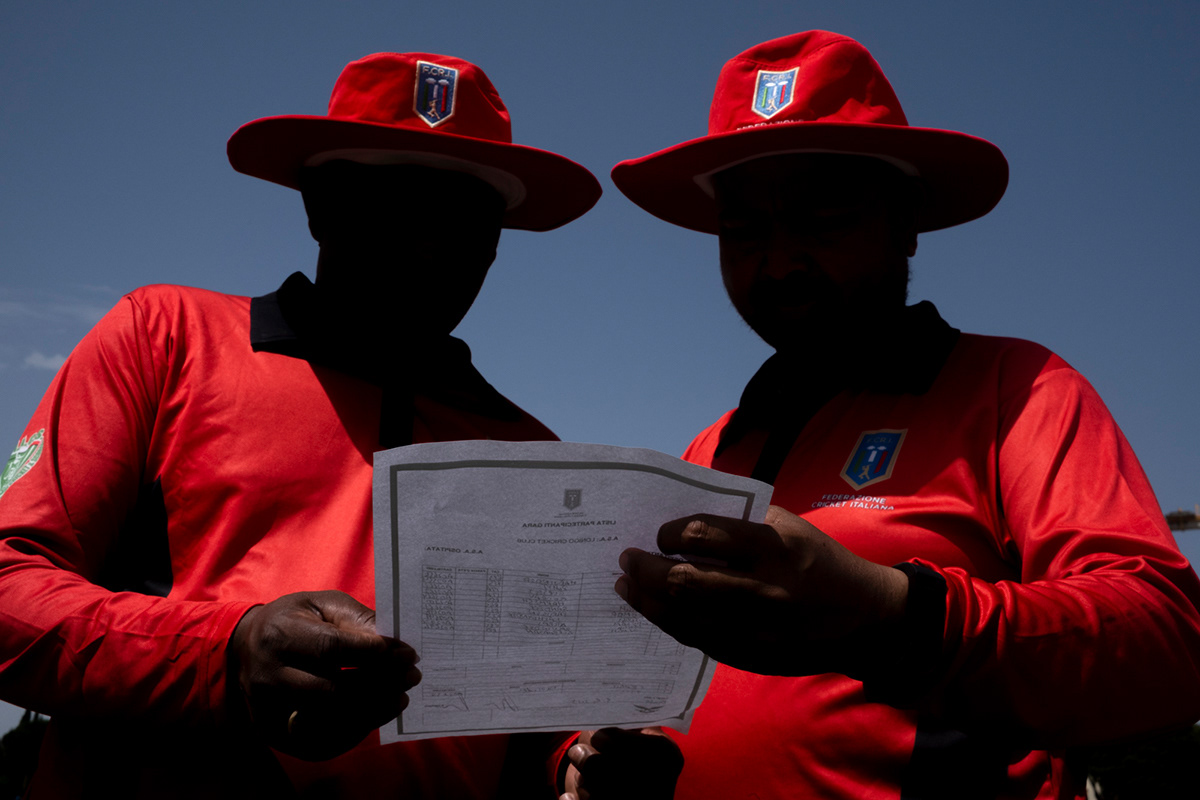PITCH. INSIDE THE ITALY OF CRICKET
The first thing that catches the eye is the players' uniforms: colourful, garish, some even fluorescent. Looking closely, this Italy of Cricket is first and foremost a celebration, a way to get together, a break, a few hours of dreaming and escapism after a week of hard work. And dreams, you know, are more beautiful the more colourful they are.
The Italy of Cricket is primarily composed of workers who have traveled from afar - Sri Lanka, Pakistan, India and Bangladesh - arriving in cities like Milan, Ancona, Genoa or Naples to carve out a future for themselves. Thejourney is fraught with hardships and challenges: days spent on construction sites, in factories or fields, families often separated by thousands of kilometres, and pervasive loneliness. While Italians are known for their hospitality, Italian laws often complicate the already difficult path to integration, with a citizenship law dating back thirty years, still based on a rigid version of the “ius sanguinis” principle.
The Italy of Cricket, as vividly captured by photographers Massimiliano Faralli, Valeria Tofanelli, Simone Mantia and Antonino Sismo, embodies the most genuine values of sport: playing for the sake of play, fun, camaraderie,mutual understanding. Cricket is played everywhere – in fields, on asphalt pitches, and on sand. The surface matters little because cricket grounds serve as a laboratory for dialogue among people from diverse countries, languages, cultures and religions. The sport also excels at uniting different generations, even those that, due to the rapid pace of modern life, have grown up in entirely different worlds despite their temporal proximity.
The players' acid green and shocking pink shirts tell another story. Team names reflect the attachment of immigrants to the cities that welcomed them, a form of gratitude that borders on parochialism. The logos and brands of sponsors often represent employers’ appreciation for their employees or the pride of those who, having arrived with nothing, have managed to establish their own businesses after years of sacrifice. Is this not also integration?
Leafing through the close-up shots of this book, one discovers another noteworthy aspect: women have also claimed a significant space in the Italy of Cricket. Not only as spectators, or as cooks preparing meals for visiting teams during halftime, but increasingly as players, as central figures on the field. Though this progress is gradual, those who overlook it may not fully appreciate the cultural distances and initial conditions involved.
Finally, the role of the Italian Cricket Federation, its officials and umpires deserves recognition. The Federation has the merit of giving the Italy of Cricket
an official, institutional presence, like a shiny trophy won after a summer of Sundays spent sweating under the sun.
Francesco Moscatelli
Author with Giacomo Fasola and Ilario Lombardo of "Italian Cricket Club. Il gioco dei nuovi italiani” (Add, 2013)



















